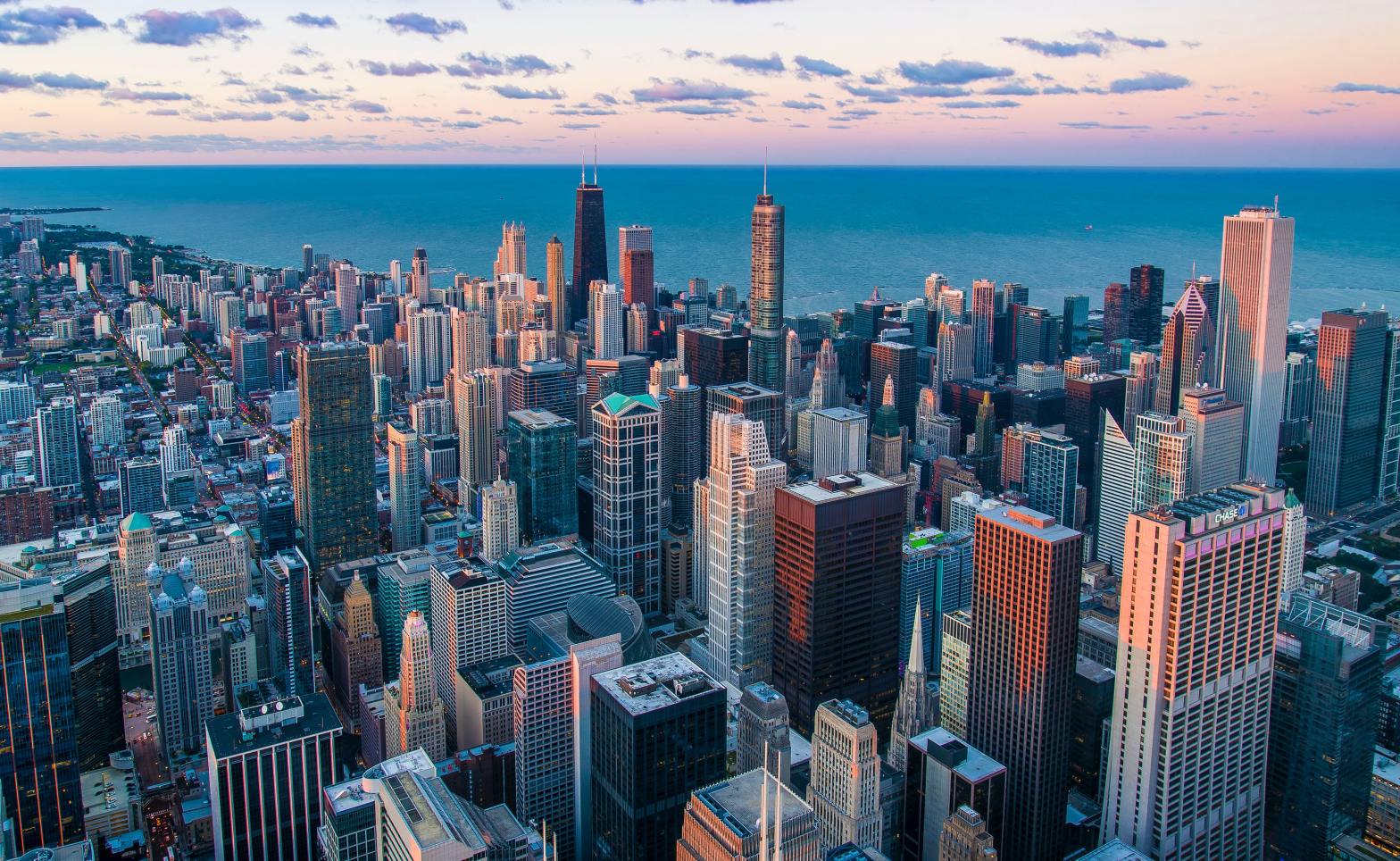In the last scene of The Wizard of Oz, Dorothy wakes up surrounded by her family. She looks around to see the faces of the people she loves and says, “there’s no place like home.” Dorothy’s repetition of the phrase “there’s no place like home” condenses the meaning of what home means for each of us. Home is a place we associate with familiarity, love, and safety.
People always ask me where I’m from. Depending on how much time we have, my answer is entirely different. The question of where home is should be simple, but it hasn’t always been that way for me.
If “where are you from?” means “where were you born?” then I’m from Russia. If it means “where did you grow up?” then it’s Israel, Canada, and the United States.
By the time I was 12 years old, my family moved to our fourth country and seventh city. Since then and for the last 20 years, the Chicago area has been where I live. When I think where I want to live for the rest of my life there is no question that’s Chicago.
A few weeks ago I had the idea to write about Chicago’s architecture. Surely, it’s an interesting topic—I love architecture and have always been fascinated with skyscrapers and unique buildings. I wanted to learn more about the history of the city but I just couldn’t find the words. I got demoralized and thought, “why bother?”
I questioned what it was about Chicago architecture that made me want to write about it in the first place. It wasn’t the iconic Chicago School, Postmodern, or Art Deco styles. The true reason Chicago’s architecture resonated with me was a deep-rooted connection I now have to the city I’ve spent most of my life in.
I wanted to write about my home.
My childhood identity centered around moving.
I was born in St. Petersburg, Russia. My parents planned to move to the United States shortly after I was born but the U.S. changed policies that closed the processing of visas for Soviet Jews. With thousands of other families, my parents began their immigration journey. When I was four we moved to Israel. When I was seven we moved to Canada. The first two years in Canada were in Montreal, then two more in Toronto, and finally a year in Ottawa.
In the summer of 2000, my mom received a job offer in Chicago. This finally allowed my parents to receive a working visa and move to the United States.
When I was growing up I didn’t understand why we kept moving so frequently. “I just made new friends, now I have to make new ones again?”, I kept asking. Each city and each move allowed my parents to inch closer to their goal. Their immigration was far from easy; many people would have given up along the way. I know their sacrifices to give me a better life came at the expense of their own career growth and financial security. I don’t take their path for granted and truly appreciate what they did.
Discovering and Falling in Love with Chicago
I grew up in the suburbs of Chicago but rarely spent time in the city. I most often saw the city from a golf course on a hill near my parents’ house. As you step onto the 6th tee, the Chicago skyline becomes visible in the distance. On a clear day you can see both the Willis Tower and John Hancock Center, and admire the beauty of the skyline. I played hundreds of rounds at that course and each time I looked at the city from that spot it gave me a sense of hope and wonder. I would imagine the future as I would one day get to explore and live in the city that was staring back at me.
I didn’t truly get to know Chicago until college. As a commuter student I had to take the train into the city each morning. DePaul University’s finance school is located in downtown Chicago’s Loop. It is within walking distance to some of the most iconic architecture in Chicago’s history including the Chicago Board of Trade Building, Monadnock Building, Rookery Building, as well as the Art Institute of Chicago. DePaul’s own building was built in 1912 and used to house the A.M. Rothchild & Co. store before it was purchased and converted to its current downtown college campus.
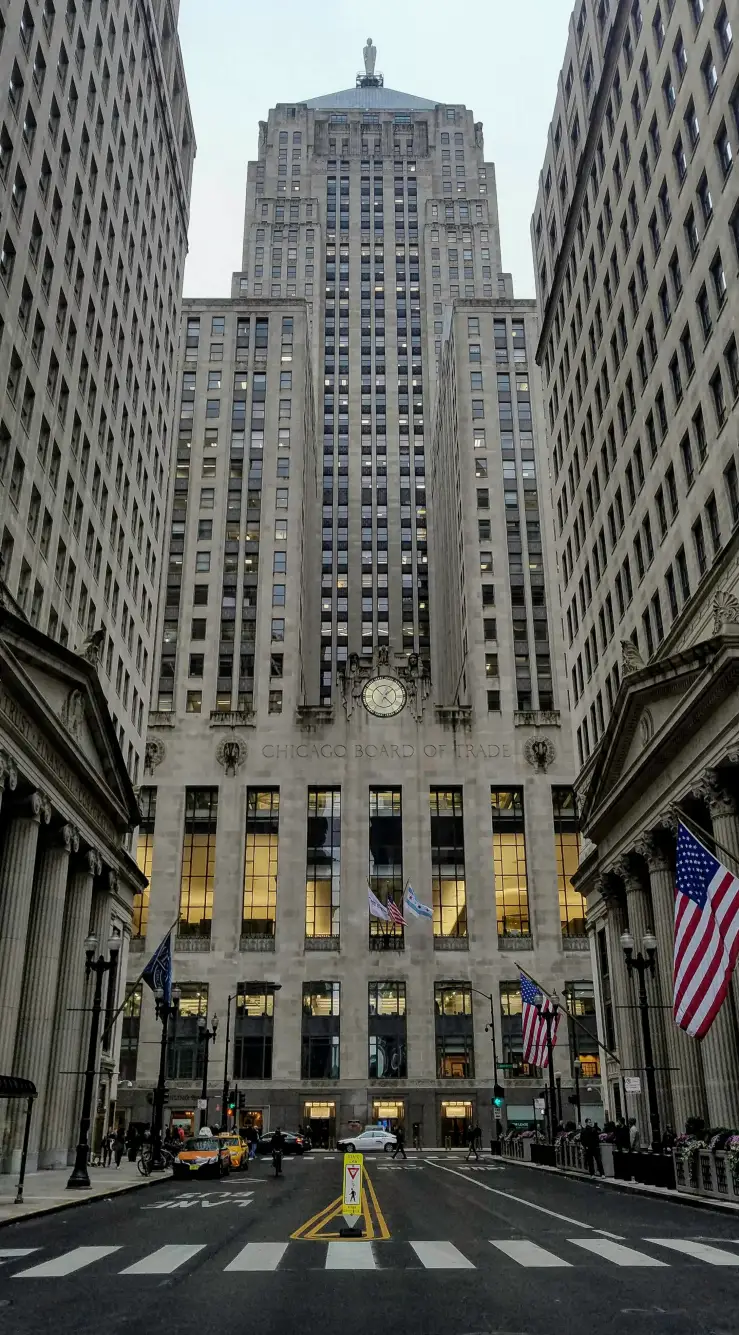
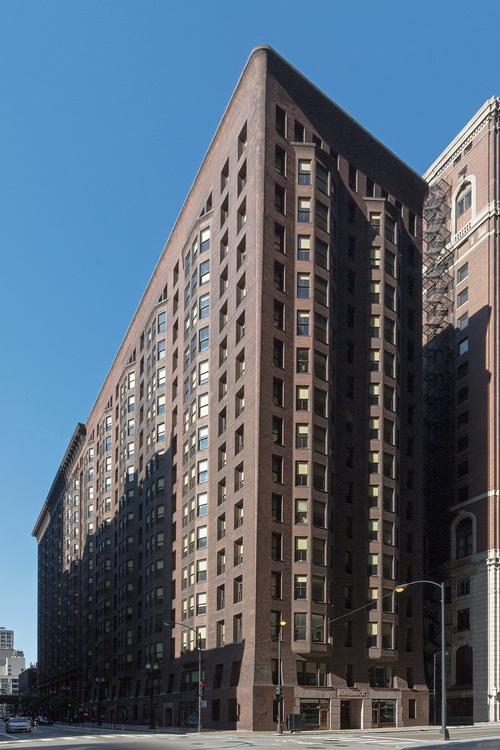


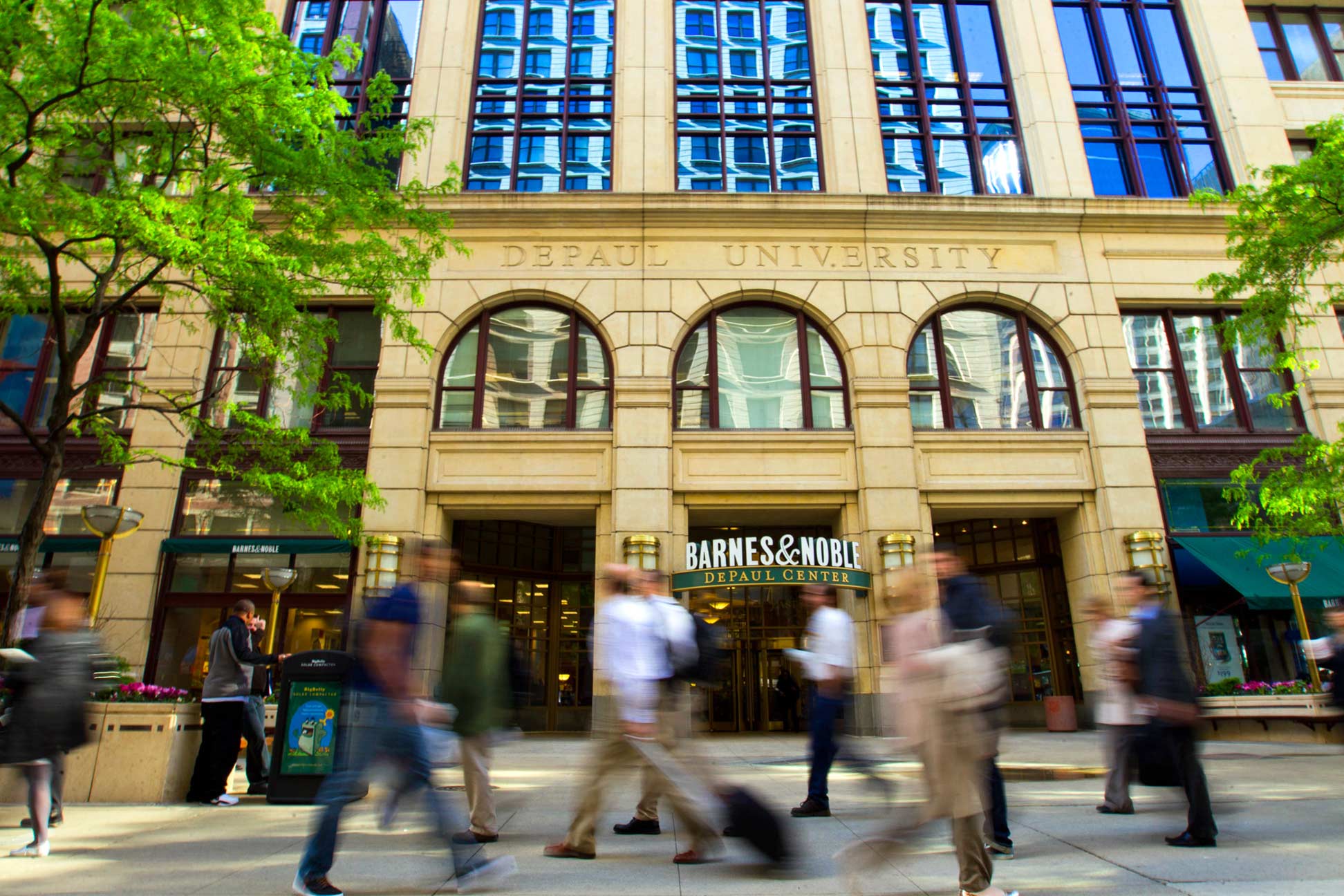
I spent many hours walking around the city during breaks from class. Chicago comes to life with any stroll through its downtown streets. Chicago is truly an experience with its enormous buildings that reach up into the sky at various angles and in a variety of shapes. The skyline comes into view when walking through plazas, parks, and streets with the sun penetrating through the clouds.


When I needed a few hours of quiet study time I made the 5-minute walk from DePaul’s campus to my favorite coffee shop. Intelligentsia is located in the lobby of the historic 16-story Monadnock Building. The north half of the building was designed by the firm of Burnham & Root in 1891. At the time, it was the tallest load-bearing brick building ever constructed and employed the first portal system of wind bracing in America. The decorative staircases in the building represent the first structural use of aluminum in building construction.
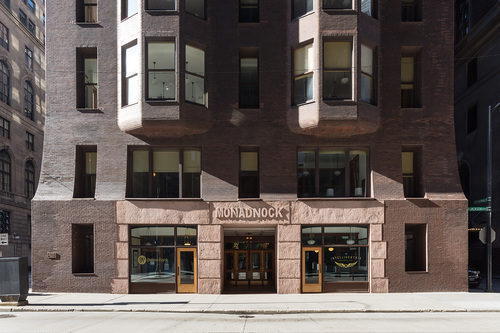

The south half, completed in 1893 is similar in color and profile to the north half, but the design is more intricate. When completed, it was the largest office building in the world.
The more I explored, the more I fell in love with the city. Even now, a walk through Millennium Park on a sunny day is always hard to beat. Situated just north of the Art Institute, the 25-acre space is used to showcase cutting-edge art, architecture, and landscaping. It’s a backdrop for concerts and festivals and truly one of the best places to observe the city.
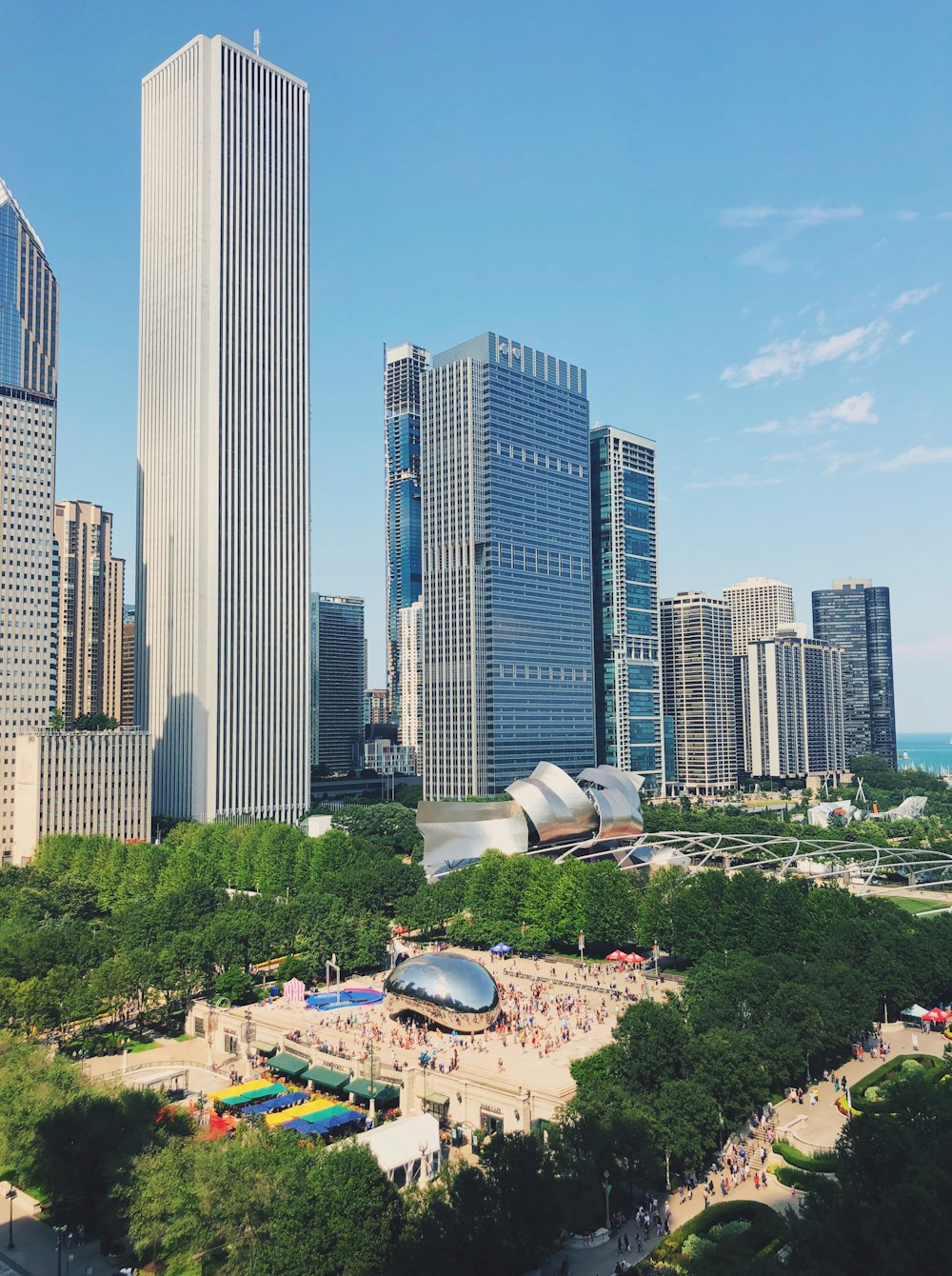
The best way to see this city is by going on the architecture boat tour— it’s one of those activities that appeals highly to tourists, but something both tourists and residents need to do at least once. When you’re on the boat, you glide through the city as if you’re in a movie. The greatest hits of architecture slide past you as you weave down the river. From that vantage point, the buildings look powerful and strong. Like paintings at the museum, each getting space around it like a magnificent work of art.

Moving to and Living in Chicago
It wasn’t until several years after college that I moved into my first Chicago apartment. In the summer of 2014, I started a new job downtown and found an amazing apartment in Logan Square overlooking the city skyline. It made me so happy to see this view every day, knowing how long I’d wanted to live there. The neighborhood is home to a diverse population of various backgrounds. Due to the increase in housing costs in nearby neighborhoods, Logan Square is home to Chicago’s aspiring artists.
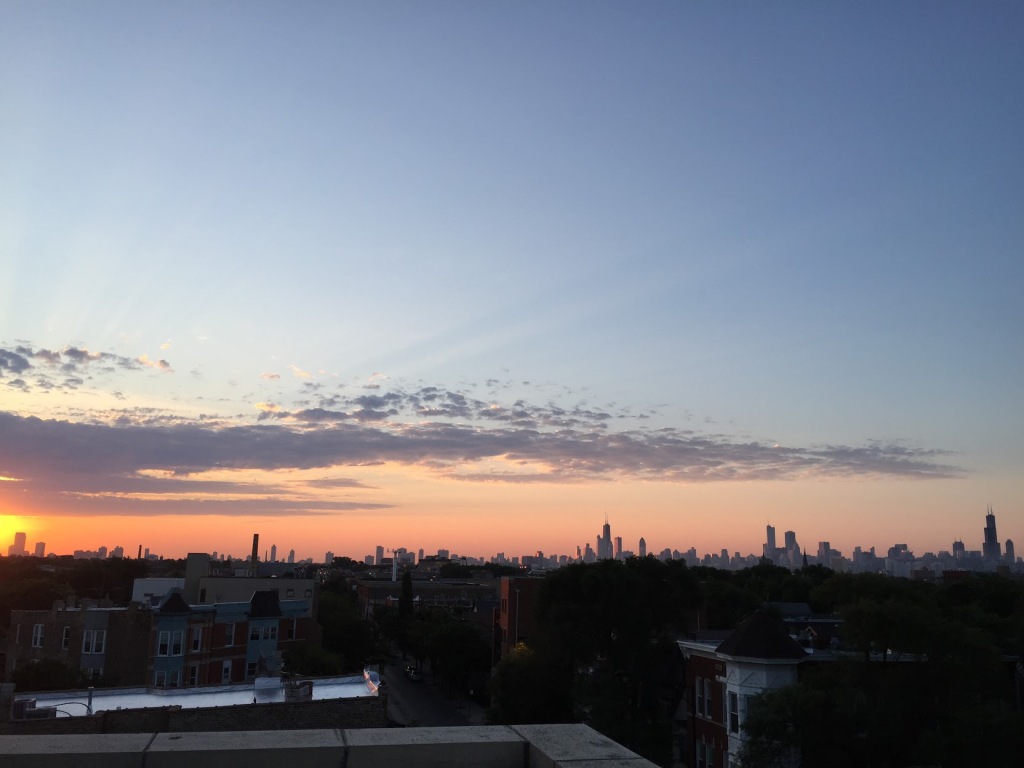

Zig-zagging through the streets in that neighborhood is a lesson in Chicago’s architectural history. Most people are attracted to Logan Square for its beautiful park-like boulevards. The neighborhood is world-famous for its unique architectural styles, from Bungalows and Two-Flats to the grand Greystones along Logan Boulevard.

With my office in the Loop, I have a front-row seat to the constant changes happening to Chicago’s skyline. The birthplace of the skyscraper, Chicago is reinventing itself as it prepares for a new batch of tall, eye-catching towers. There are currently five towers taller than 800 feet under construction in the city, including the Vista Tower. The 101-story skyscraper will be the city’s third-tallest building when complete and the tallest structure in the world designed by a woman.

When I started dating my now fiancée, her apartment’s balcony faced the Vista Tower construction site and I would always marvel at the progress. The tower should be completed later this year and will feature six shades of glass for its distinct exterior curtain wall. This will act as a unique centerpiece to an already impressive skyline.
Near her old apartment and the Vista Tower, the Chicago Riverwalk is an open, pedestrian waterfront located on the south bank of the Chicago River. On the rare occasion we had nice weather, I would walk west towards West Loop from her apartment to my office and momentarily escape the bustle of the city to admire nature and the unique architecture on the river.

West Loop has experienced significant change over the time I’ve lived in Chicago. What was once used for manufacturing and warehousing, it’s now home to corporate office space, luxury loft condominiums, restaurants, and bars. The current site of McDonald’s headquarters was where Oprah Winfrey’s Harpo Studios were located. Google’s Chicago offices were once a 10-story cold storage building that anchored the meatpacking district that surrounded it. You literally cannot walk down a street in the West Loop these days without seeing something under construction.

From a purely pragmatic standpoint, the crucial factor of choosing where to live is being able to walk everywhere and Chicago is perfect for that. The neighborhoods are easy to navigate, find what you need, or seek out interesting things to do. Many of the city’s great restaurants are dispersed around town and it’s normally very easy to walk anywhere your appetite desires. The cuisine is diverse and the people are warm and welcoming.
Here are some of my favorites:
- Logan Square: walk around the lush green boulevards and appreciate the historic greystones and bungalow-style homes. I would grab a bite to eat at Giant or Lula Cafe and coffee at Intelligentsia.
- Lincoln Park: this is one of Chicago’s most affluent neighborhoods. Due to a quirky zoning law, Lincoln Park is home to some of the city’s most expensive single family homes. If you have a spare $45 million laying around, you could buy this monstrosity. For food, I recommend Galit, Athenian Room, or Pequod’s—unquestionably the city’s best deep dish pizza.
- West Loop/Fulton Market District: the neighborhood is undergoing a development boom and is one of the fastest-growing in the city. Grab the legendary burger at Au Cheval, if you can tolerate the 2-3 hour wait. Spoiler alert – it’s worth it. I remember taking a friend here and enjoying a lovely walk around the city while we waited for a table. Honorable restaurant mentions: The Publican, Avec. Grab a coffee at Sawada.
- Ukrainian Village: According to real estate website Redfin, Ukrainian Village was named as the hottest neighborhood nationwide in 2016. The neighborhood is adorned with brick and stone homes from the 19th century and is more affordable relative to other popular Chicago neighborhoods. Ukrainian Village’s best kept secret is my favorite sushi restaurant Kai Zan. The owners treat us like family and it’s truly a pleasure to eat there every time. I’ve only been there about 70 times now 😁.
For all the great things Chicago has to offer, one would be naive to think that the city is perfect.
- Residents have to deal with miserably cold winters.
- The city has a history of not using tax dollars efficiently, ranking in the bottom in fiscal health in the United States.
- While uncommon in most areas, there is an issue with gang-related gun violence.
- There has been little success in trying to provide good social and labor structures in poorer neighborhoods.
- The education system is a mess. The running joke is that young people move to the city for fun, meet a mate and move to the suburbs to put their kids in better schools.
Despite its flaws, there is a fierce hometown pride among Chicagoans. It’s a very welcoming place to newcomers, especially for my family nearly 20 years ago. Mix New York City hustle with midwestern generosity and you get Chicagoans. They have a rust-belt blue-collar edge with the swagger of a major urban socialite. The people make the city, and the city definitely makes the people. After finishing high school, college, and becoming a naturalized US citizen while living in Chicago, I gained a sense of belonging and stability that I never had when I was younger. Chicago has taken me in with open arms and has given me my best friends, work, and my fiancée. I became an adult in this city and watched it grow and evolve before my eyes. I can’t wait to see what the future holds in my home, Chicago.

Thank you to my Saturday Crossfit for Writing group, Justin Milokay, and my fiancée Blair Zimelis for their help and conversations with this essay.
If you would like to receive future articles by email, subscribe to my Wednesday Wisdom newsletter.

